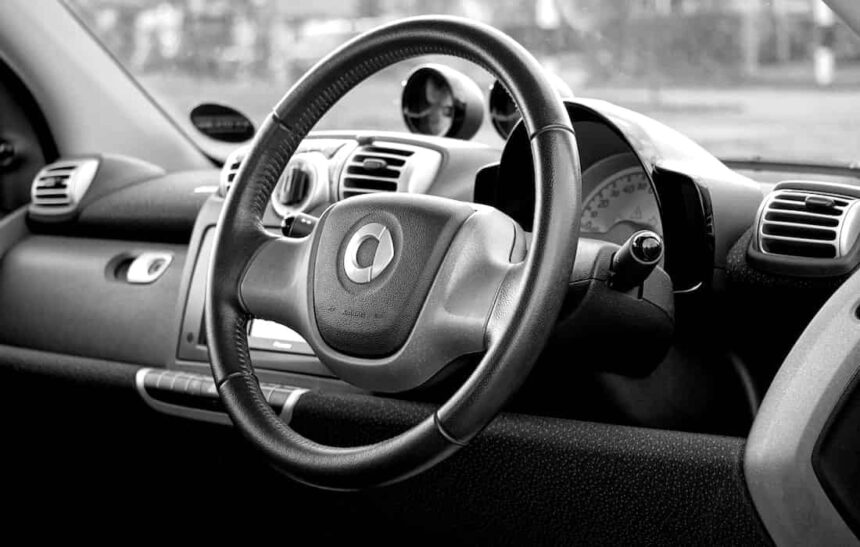The steering wheel of a car is one of the most frequently used parts of a vehicle. Whether you are commuting to work, running errands or going on a road trip, your hands are likely to be on the steering wheel for a significant amount of time. As a result, it’s not surprising that it can accumulate dirt, grime, and bacteria over time. A dirty steering wheel can not only be unappealing but can also harbour germs, which can be harmful to your health. In this article, we will discuss the importance of cleaning your car’s steering wheel and provide a comprehensive guide on how to do it effectively.
Factors That Contribute To A Dirty Steering Wheel
A car’s steering wheel can accumulate dirt and grime due to several factors. Some of these factors include regular use, sweat, oils from your skin, and exposure to elements like dust, pollen, and rain. Additionally, food and drinks can spill onto the steering wheel, leaving behind sticky residue and stains. Pets can also add to the problem by shedding hair and leaving behind paw prints. If your car’s steering wheel is not cleaned regularly, it can become a breeding ground for germs and bacteria, which can cause various health problems.
Preparing for Cleaning
Before you start cleaning your car’s steering wheel, it is essential to gather all the necessary supplies. These include a microfiber cloth, a mild cleaning solution, and gloves to protect your hands from any harsh chemicals. Ensure that you read the car manual for any specific recommendations from the manufacturer on how to clean your steering wheel. It’s essential to avoid using harsh chemicals or abrasive cleaning tools that may damage the steering wheel’s surface. Once you have gathered all the supplies, you are ready to start the cleaning process.
Car Steering Wheel Cleaning Process
- Step 1: Begin by removing any loose debris or dirt from the steering wheel using a dry microfiber cloth. You can also use a vacuum cleaner to remove any dirt or debris that may be trapped between the crevices of the steering wheel.
- Step 2: Dampen another microfiber cloth with the cleaning solution and gently wipe the steering wheel, starting from the top and working your way down. Make sure to use a light touch and avoid applying too much pressure, which can damage the steering wheel’s surface. If you are not sure which cleaning solution to use, consider using a mild soap or a specialized cleaning solution for cars. Avoid using products that contain bleach, ammonia, or other harsh chemicals that can discolour the steering wheel’s surface.
- Step 3: Pay special attention to areas where dirt and grime may accumulate, such as the grooves or crevices between the spokes and the rim of the steering wheel. You can use a soft-bristled brush or a toothbrush to gently scrub the affected area. For stubborn stains or grime, you can add a little more cleaning solution to the brush or toothbrush.
- Step 4: Once you have finished cleaning the steering wheel, wipe it down with a clean, damp microfiber cloth to remove any residue from the cleaning solution. Make sure to wipe the entire surface of the steering wheel thoroughly.
- Step 5: Allow the steering wheel to air dry or use a clean, dry microfiber cloth to dry it completely.
Tips for Removing Stubborn Stains and Grime
Stubborn stains and grime on a car’s steering wheel can be frustrating to remove. Here are some tips to help you remove them effectively:
- Grease and oil stains, use a degreaser or a specialized cleaning solution that is designed to remove oil-based stains.
- For ink or pen marks, use a cotton swab or a soft-bristled brush dipped in rubbing alcohol.
- For sticky residue, use a small amount of peanut butter or mayonnaise to help dissolve the residue. Apply the peanut butter or mayonnaise to the affected area and let it sit for a few minutes before wiping it away with a clean, damp microfiber cloth.
Preventing Future Buildup
Cleaning your car’s steering wheel regularly is the best way to prevent dirt, grime, and bacteria from accumulating on its surface. Here are some tips for maintaining a clean steering wheel:
- Avoid eating or drinking in the car, especially while driving.
- Wash your hands regularly before getting into the car to prevent oils and dirt from transferring to the steering wheel.
- Use a steering wheel cover to protect the steering wheel’s surface from dirt, grime, and sweat.
- Use a UV protectant spray to prevent the steering wheel’s surface from cracking and fading due to exposure to sunlight.
Maintenance
To keep your steering wheel clean on a regular basis, wipe it down with a microfiber cloth at least once a week. You can also use disinfectant wipes to kill any germs or bacteria that may be present. It is important to avoid using harsh chemicals or abrasive cleaning tools that may damage the steering wheel’s surface. If you are unsure about how to properly maintain your steering wheel, consult your car’s manual or a professional detailer.
When to Schedule a Professional Cleaning
If your steering wheel has not been cleaned in a long time or has accumulated a significant amount of dirt and grime, it may be time to schedule a professional cleaning. A professional detailer can use specialized tools and cleaning solutions to thoroughly clean and disinfect your steering wheel.
Conclusion
In conclusion, cleaning your car’s steering wheel is an essential part of maintaining a clean and healthy vehicle. A dirty steering wheel not only looks unappealing but can also harbour germs and bacteria that can be harmful to your health. By following the steps outlined in this article, you can effectively clean your car’s steering wheel and prevent future buildup. Remember to use gentle cleaning solutions and tools to avoid damaging the steering wheel’s surface, and take precautions to prevent future buildup by maintaining good hygiene and using protective covers. By taking care of your car’s steering wheel, you can ensure that it remains in excellent condition for years to come.










